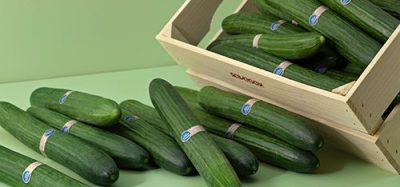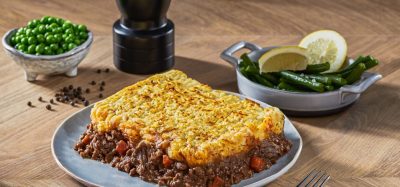-2°C to -12°C, not chilled but not frozen
Posted: 1 June 2010 | Christian James, Research Fellow, Food Refrigeration and Process Engineering Research Centre (FRPERC) and Stephen J. James, Director, Food Refrigeration and Process Engineering Research Centre (FRPERC) | No comments yet
The drive to maximise the storage and display lives of perishable foods has led to increasing interest in holding foods in the region between their freezing point and -12°C. This is a grey area in terms of much international legislation, since food is not usually considered fully ‘frozen’ until it is below -12°C and only considered ‘chilled’ above its freezing point. There is also a confusion of terms used to describe the states of foods and processes in this temperature region. The terms ‘super-chilled’, ‘deep-chilled’, ‘ultra-chilled’ or ‘partially-frozen’ are often used for foods held in this temperature region; the Japanese also use the term ‘Hyo-on’.
The drive to maximise the storage and display lives of perishable foods has led to increasing interest in holding foods in the region between their freezing point and -12°C. This is a grey area in terms of much international legislation, since food is not usually considered fully ‘frozen' until it is below -12°C and only considered ‘chilled' above its freezing point. There is also a confusion of terms used to describe the states of foods and processes in this temperature region. The terms ‘super-chilled', ‘deep-chilled', ‘ultra-chilled' or ‘partially-frozen' are often used for foods held in this temperature region; the Japanese also use the term ‘Hyo-on'.
The drive to maximise the storage and display lives of perishable foods has led to increasing interest in holding foods in the region between their freezing point and -12°C. This is a grey area in terms of much international legislation, since food is not usually considered fully ‘frozen’ until it is below -12°C and only considered ‘chilled’ above its freezing point. There is also a confusion of terms used to describe the states of foods and processes in this temperature region. The terms ‘super-chilled’, ‘deep-chilled’, ‘ultra-chilled’ or ‘partially-frozen’ are often used for foods held in this temperature region; the Japanese also use the term ‘Hyo-on’.
Confusingly, some in the food industry also use similar terms for chilled foods that are simply held below 0°C, or use the terms ‘super-chilling’, ‘deep-chilling’ or ‘hard-chilling’ for the process of using refrigerating temperatures below 0°C (also commonly referred to as ‘rapid’ or ‘ultra-rapid’ chilling). Where freezing occurs during the process before equalising at the required storage temperature, terms such as ‘crust-freezing’ and ‘partial-freezing’ may also be used. Crust-freezing is often used to aid the cutting of foods by making the outside of the product rigid and thus easier to cut. A more controlled process, whereby the whole of the product is at a uniform temperature where it has a substantial ice content for slicing or other forms of processing, is called ‘tempering’. To yet further confuse matters, some foods can be held significantly below their freezing point without freezing occurring (i.e. nucleation of ice crystals); this is usually referred to as ‘super-cooled’, ‘sub-cooled’, or ‘under-cooled’.
Super-chilling
Typically, the aim of super-chilling is to store food products at temperatures just below their initial freezing point; low enough to substantially reduce bacterial activity but high enough to avoid significant levels of ice crystal growth that can cause structural damage. For typical foodstuffs such as fish, meat and vegetables, these temperatures are in the range -1°C to -7°C, at which (depending upon composition) approximately 10 to 50 per cent of water in the product is ice.
The majority of the literature on super-chilling has been on fish and other seafood1,2,3,4,5 although the process has been commonly utilised in the USA for poultry6. This product is seldom referred to as super-chilled, since legally in the USA poultry meat kept above -3.3°C can be marketed as ‘fresh’ (US Poultry products inspection regulations 9CFR381). Studies on cured and raw pork joints have reported super-chilling to significantly extend the shelf-life of such products, in comparison with chilling, and produce product of a similar quality to chilled4,7,8. However, super-chilled raw beef has been shown to have similar drip characteristics to frozen beef, and super-chilling to produce unsightly small white spots on the surface of the cuts9.
Super-chilled storage has a number of potential advantages over conventional chilled and frozen storage, chief of which is the ability to extend food product storage life from days to weeks without having to suffer the detrimental quality effects caused by substantial ice crystal formation. It has also been claimed that the presence of ice crystals in super-chilled products could help to maintain acceptable temperatures throughout the chill chain by providing the equivalent of an ‘internal thermal reservoir’3. If the process makes freezing unnecessary for some products, it could possibly offer considerable energy savings by obviating the need for blast freezers and low temperature storage and display. Additionally, super-chilled products could be merchandised more attractively by retailers in comparison with frozen equivalents. Products that are currently bulk frozen and require thawing before retail display (such as many fish products) will not require thawing.
Tempering and crust-freezing
Tempering is the process of taking a food product to a temperature where a substantial amount of the water in the product is in the form of ice but not all the water has turned to ice. This temperature must be below the freezing point and is often between -2°C to -5°C, temperatures often utilised for super-chilled storage. At this state, the product is rigid but not hard, and thus easier to cut. The tempered product may either be cooled to this state from a temperature above the freezing point or warmed from a frozen temperature. Crust-freezing is often used for the same purpose, but is essentially a less controlled process where only the surface is frozen. This is fine for some products but tempering to a uniform temperature and rigidity throughout allows more uniform and controlled cutting and is crucial for the yield of high quality undamaged slices in some products10,11.
Super-cooling
Super-cooling is the phenomena where the temperature of a solution or material is reduced below its freezing point without crystallisation occurring, due to an energy barrier that must be surmounted before nucleation starts. When crystallisation begins, the temperature is raised to the freezing point. The point at which nucleation is initiated may be referred to as the ‘nucleation point’ or ‘meta stable limit temperature’12.
It is well known that liquids can readily super-cool in domestic freezers with ice unexpectedly and suddenly forming when the bottle or can is opened or shaken. Many examples of home experiments and demonstrations of these phenomena can be found on YouTube, for instance. A number of beverage companies have developed commercial products utilising super-cooling. The advantage of ice formation through super-cooling is that this ice is created from within the beverage, thus it is not diluted. A super-cooled lager ‘Arc’ was developed by Bass Brewers (subsequently relaunched by Coors as ‘Coors Sub Zero’) which was served at -2.5°C with a head of ice crystals that were nucleated in the super-cooled lager as it was poured13. It has also recently been reported that Coca-Cola has developed a ‘super cold’ variant of Sprite that will be marketed as ‘Sprite Super Chilled’14. These super-cooled products should not be confused with what are commonly marketed as ‘super-chilled’ beverages. These are merely products kept a few degrees colder than similar products, generally below 0°C but above the products freezing point.
As well as being important in the production of ice creams, a number of novel freezing systems also use super-cooling by subjecting the target product to low-intensity magnetic fields (such as in Cells Alive System (CAS) developed by the Japanese company ABI Co Ltd) or high pressure15, to achieve uniform and rapid ice formation throughout the product. In these cases, super-cooling is step on the way to full freezing.
The ability of plants to super-cool to avoid frost damage is relatively well known16. Less reported is the ability of whole fruits and vegetables to super-cool. As early as the 1920s, Diehl17 reported that isolated apples could sometimes be cooled to a point as low as seven or eight degrees below their freezing point without ice formation, provided the fruit was left undisturbed. A multitude of other fruits and vegetables have also been reported to be capable of significant super-cooling, including fruits such as grapes, oranges, lemons18, strawberries19 and tomatoes12, as well as vegetables such as potatoes (Hruschka et al., 1961) and cauliflowers20. Recent studies at FRPERC21 have found significant, and surprisingly stable, super-cooling to occur in a wide variety of vegetables (such as garlic, shallots and cauliflower) and have demonstrated that some vegetables (such as garlic and shallots) can be stored at temperatures significantly below their freezing point for weeks without freezing occurring.
Future developments
The storage and processing of foods at temperatures in the region between -2°C to -12°C has much to offer in terms of improved safety and quality, extended shelf life and lower energy consumption. More research and development is required to maximise this potential and there is a need to legal define and rationalise the definition of products processed in this temperature range.
References
- Waterman, J. J. & Taylor, D. H. (1967) Superchilling. Torry Research Note No. 32.
- Le Danois, E. (1920) Nouvelle méthode de frigorification du poisson. French Patent No. 506.296. (Cited by Aune, 2003).
- Aune, E. J. (2003) Superchilling of foodstuff, a review. 21st International Congress of Refrigeration, IIR/IIF, Washington, US. ICR0127.
- Haugland, A., Aune, E. J. & Hemmingsen, A. K. T. (2005) Superchilling – innovative processing of fresh food. EuroFreeze 2005: Individual Quick Freezing of Foods, Proceedings of EU Workshop (Project QLK1-CT-2002-30544), 13-15 January 2005, Sofia, Bulgaria, pp1-8.
- Gregersen, F. (2006) Even longer shelf life. Fiskeriforskning Info, no. 11.
- Jul, M. (1986) Chilling broiler chicken: an overview. Recent advances and developments in the refrigeration of meat by chilling, Meeting of IIR Commission C2, Bristol (UK), pp133-43.
- Bøgh-Sørensen L & Zeuthen P (1984), ‘The validity of the TTT-concept on the shelf lives of chilled, cured meat products’, Proceedings of the European Meeting of Meat Research Workers, 30, Section 5:5, 223-224.
- Duun, A. S., Hemmingsen, A. K. T., Haugland, A. & Rustad, T. (2008) Quality changes during superchilled storage of pork roast. LWT – Food Science and Technology. Vol. 41, pp2136-2143.
- Small, A., Sikes, A. & Doral, D. (2008) Preliminary investigations into the use of deepchill temperatures for prolonged storage of beef. Proceedings of the 54th International Congress of Meat Science and Technology (ICoMST), Cape Town, South Africa.
- James, S. J. & James, C. (2002) Meat Refrigeration. Woodhead Publishing Limited, ISBN 1 85573 442 7 1-347.
- Lammertz, M. & Brixy, N. (2001) Continuous process and production improvements by application of refrigeration with cryogenic gases. Rapid Cooling of Food, Meeting of IIR Commission C2, Bristol (UK) Paris: International Institute of Refrigeration, ISSN 0151-1637 ISBN 2-913149-23-5, pp119-126.
- Cox, D. R. G. & Moore, S. R. (1997) A process for supercooling, Patent WO 97/18879.
- Derbyshire, D. (2006) Would you like ice with your lager? The beer that is served at -2.5°C. Telegraph. 23 June 2006. (http://www.telegraph.co.uk/news/main.jhtml?xml=/news/2006/06/22/nbeer22.xml&sSheet=/news/2006/06/22/ixuknews.html)
- Reynolds, J. (2007) Coke plots ‘sprite with ice’ with help of new technology. MarketingWeek. 12 September 2007. (http://www.marketingweek.co.uk/cgi-bin/item.cgi?id=57846)
- Urrutia, G., Arabas, J., Autio, K., Brul, S., Hendrickx, M., Kakolewski, A., Knorr, D., Le Bail, A., Lille, M., Molina-García, A. D., Ousegui, A., Sanz, P. D., Shen, T. & Van Buggenhout, S. (2007) SAFE ICE: Low-temperature pressure processing of foods: Safety and quality aspects, process parameters and consumer acceptance. Journal of Food Engineering. Vol. 83:2, pp293-315.
- Pearce, R. S. (2001) Plant Freezing and Damage. Annals of Botany. Vol. 87, pp417-424
- Diehl, H. C. (1924) Freezing injury of apples. Journal of Agricultural Research. Vol. 29, pp0099-0127.
- Lucas, J. W. (1954) Subcooling and ice nucleation in lemons. Plant Physiology. Vol. 29, pp245-251.
- Martins, R. C. & Lopes, V. V. (2007) Modelling supercooling in frozen strawberries: Experimental analysis, cellular automation and inverse problem methodology. Journal of Food Engineering. Vol. 80, pp126-141.
- Fuller, M. P. & Wisniewski, M. (1998) The use of infrared thermal imaging in the study of ice nucleation and freezing of plants. Journal of Thermal Biology. Vol. 23:2, pp81-89.
- James, C., Seignemartin, V. & James, S. J. (2009) The freezing and supercooling of garlic (Allium sativum L.). International Journal of Refrigeration. Vol. 32:2, pp253-260. IIR (2006) Recommendations for the Processing and Handling of Frozen Foods. IIR, Paris.
R22 phase out
Judith Evans, Food Refrigeration and Process Engineering Research Centre FRPERC
From 1 January 2010, the EC (ODS) Regulation 2037/2000 specifies that no virgin HCFC can be supplied or used for servicing existing equipment. From 1 January 2015, the same regulation states that no recycled or recovered HCFC can be supplied or used to service existing equipment.
R22 is a HCFC and is covered by these regulations. R22 is still a common refrigerant throughout the food cold chain. A survey carried out in 2005 for the Carbon Trust (Strategic Review of Refrigeration Use in Food and Drink Sector) found that 70 per cent of food processing sites had refrigeration plant containing R22. Interestingly, only 25 per cent of those with R22 on site stated that they planned to buy new plant in the next few years. This would indicate that a large number of food manufacturers still have plants containing R22 today.
It would appear that few companies have a clear strategy for R22 replacement. As the R22 phasing out dates come closer, the availability of resources (contractors, equipment and refrigerant) will become more scarce and expensive. Food manufactures have several options to ensure refrigeration plants remains in use once the R22 phase out begins.
The ODS regulations do not ban plants from operating using R22 but legislate against use of virgin and recycled refrigerant. If the plant is leak free then it is possible to continue operating using R22 for as long as the user may wish. However, the user leaves themselves vulnerable if plant should leak, become damaged or require invasive remedial work. Users who own a number of plants operating on R22 are best adopting a staged phase out strategy. Initially, plant records should be examined to determine the plant(s) with historically the greatest leakage and maintenance issues. These plants can then be either replaced with new or (after being made leak free) possibly retrofitted with a drop in replacement for R22. Assuming it is clean, the R22 from the now defunct plant can then be used in other R22 plants until 2015. If the plants containing R22 are gradually replaced then users can schedule and plan a gradual phase out of R22.
The phase out of R22 if carried out in a planned manner is an opportunity for users to improve and optimise plants. Over time, many refrigeration systems may have been altered and may no longer be fully suitable for their task. Opportunities therefore exist to fit better optimised, energy efficient plants. Information on options available now and in the future to improve the efficiency of refrigeration plants is available via a Defra-funded project at: www.frperc.bris.ac.uk/defraenergy/index.html








